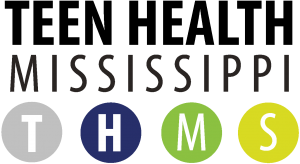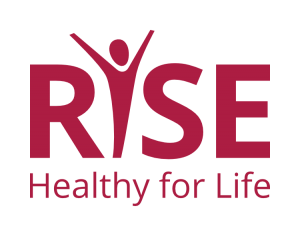Coping skills are strategies we use to manage unpleasant emotions, decrease stress, and establish order in our lives. They can be used in the classroom both by students and teachers. Participants will not only learn practical skills to use in their daily lives but also how to teach these skills to their students.
Training Hub
The Sex Education Collaborative Training Hub lists trainings for sex educators, facilitators, and other professionals on best practices for sharing important information with clients and the public. From teaching anatomy inclusively to effectively addressing bias in the classroom to addressing racial justice and equity in sex education, the Training Hub includes trainings, technical assistance, and policy support from state, regional, and national leaders in the field of sex education.
Please note: The Training Hub includes both in-person and online professional trainings. If you see a training you are interested in and it isn’t listed as virtual, please reach out directly to any of our members to find out what's possible!
Trainings Offered by State-Based and National Organizations
Displaying results 36 - 40 of 154Coping Skills in the Classroom
Coming soon...
Building Self-Esteem and Body Confidence
After this workshop, participants will be able to explain appearance ideals that students encounter and where pressure to achieve them comes from.
This training is designed for:
- Teachers
- Substitute Teachers
- Counselors
- Coaches
- Parents
- Clergy
- Community Workers
- Educators
- Indicator 1 (K-12): Describe three distinguishing characteristics between healthy and unhealthy relationships, involving family, friends, and/or romantic partners.
- Indicator 1 (K-12): Describe how puberty prepares the human body for the potential to reproduce.
- Indicator 2 (K-12): List three physical, three social, and three emotional changes that occur during puberty.
- Indicator 3 (K-12): Identify three practices that students can adopt for maintaining healthy habits beginning during puberty.
How to Choose a Curriculum
There are many options for sex education curricula; it can be overwhelming. Participants will discuss district wants and needs and various curriculum options to decide which curriculum is a good fit.
- Indicator 2 (K-12): Describe state and/or district laws, policies, and standards that relate to sex education where one teaches.
Sexuality Education Cornerstone Seminar
The Sexuality Education Cornerstone Seminar (SECS) is our most popular training opportunity for foundational information about sexuality education. SECS is designed for educators, youth-serving professionals, and individuals interested in entering sexuality education and are seeking a basic foundation of knowledge in sexuality and sexual health information that they can share with their populations. Participants receive up-to-date information about protection methods, anatomy, puberty, sexual and gender identity, communication, and sexually transmitted infections. They also develop the knowledge, skills, and practice needed to deliver information and answer questions related to sexuality. Each session of this lively, interactive, three day seminar combines discussion and hands-on practical experience in specific subject areas.
At the conclusion of the seminar, participants of this course are able to:
- Discuss key sexual health topics.
- Utilize interactive lessons for a variety of topics in sexuality education.
- Implement teaching strategies that address diverse learning styles and experiences.
- Answer questions related to sexuality in a non-judgmental, inclusive, and comprehensive manner.
- List at least three vetted resources for information on sexual health topics.
- Identify key elements of effective sexuality education.
- Define Harm Reduction Theory as it relates to sexuality education.
- Describe the role of facts vs. values, attitudes, and beliefs in teaching and learning about sexuality.
A certificate of participation is given upon successful completion and evaluation of the seminar. This training does not certify participants as sexuality educators, though some professional development and continuing education credits are available.
- Indicator 1 (6-12): Explain fertilization, implantation, conception, and how pregnancy occurs.
- Indicator 2 (6-12): Demonstrate the steps necessary for effective external and internal condom use and how to access condoms. (S)
- Indicator 3 (6-12): Describe the differences in mechanisms of action and access between emergency contraception and the abortion pill.
- Indicator 4 (6-12): Explain methods of contraception, including the latest medical advances that are popular among young people.
- Indicator 5 (6-12): Describe pregnancy options, including parenting, adoption, and abortion.
- Indicator 6 (6-12): Identify three federal and/or state laws that impact young peoples’ access to effective reproductive and sexual health care (e.g. age of consent for services, confidential access to health care services, and access to condoms)
- Indicator 1 (K-12): Demonstrate three techniques to create an inclusive and affirming learning environment. (S)
- Indicator 2 (K-12): Demonstrate three strategies for creating culturally responsive classrooms. (S)
- Indicator 3 (K-12): Describe three elements of a trauma-informed approach to sex education.
- Indicator 4 (K-12): Demonstrate three strategies of a trauma-informed approach to sex education (e.g. giving trigger warnings before content on sexual assault and allowing students the right to pass as appropriate, etc.). (S)
- Indicator 1 (K-12): Describe the importance of teachers’ maintaining professional boundaries when teaching sex education.
- Indicator 2 (K-12): List three factors to consider regarding personal disclosure when teaching sex education
- Indicator 3 (K-12): Demonstrate how to reduce the impact of educators’ passive and/or active personal disclosure on the educational environment. (S)
- Indicator 4 (K-12): Explain the roles and responsibilities of a mandated reporter.
- Indicator 1 (K-12): Demonstrate the ability to build rapport with students. (S)
- Indicator 2 (K-12): Demonstrate three student-centered instructional approaches that support a variety of learning styles. (S)
- Indicator 3 (K-12): Explain the differences between positive vs. shaming approaches to teaching sex education.
- Indicator 4 (6-12): Demonstrate how to use the experiential learning cycle when teaching. (S)
- Indicator 5 (K-12): Describe three effective strategies for practicing skills with students.
- Indicator 6 (K-12): Describe three strategies for actively involving parents, caregivers, and other trusted adults in a sex education program.
- Indicator 7 (K-12): Demonstrate the ability to analyze and tailor lesson plans to match the age, developmental stages, cultural backgrounds, and other identities of students. (S)
- Indicator 1 (K-12): Describe three distinguishing characteristics between healthy and unhealthy relationships, involving family, friends, and/or romantic partners.
- Indicator 2 (K-12): Explain three ways that healthy relationships can positively impact personal well-being.
- Indicator 3 (K-12): Describe three strategies for teaching students communication skills.
- Indicator 4 (K-12): Describe three strategies for incorporating the positive and negative impacts of communicating through technology into lessons on healthy relationships.
- Indicator 5 (K-12): Describe three ways to help students set and respect personal boundaries in relationships.
- Indicator 1 (6-12): Describe HIV and three common STDs/STIs, and how each can and cannot be transmitted.
- Indicator 2 (6-12): Explain that many STD/STIs do not cause symptoms and the only way to know if you have one is to be tested.
- Indicator 3 (6-12): Explain the benefits of getting tested and treated for HIV and other STDs/STIs.
- Indicator 4 (6-12): Explain three facilitators and three barriers to STD/STI testing and treatment.
- Indicator 5 (6-12): Demonstrate the steps necessary for effective external and internal condom use and how to access condoms. (S).
- Indicator 6 (6-12): Describe the latest medical advances in HIV and other STDs/STIs prevention and treatment.
- Indicator 7 (6-12): Identify three medically accurate and youth-friendly resources for STD/STI and HIV prevention, testing, and treatment
- Indicator 1 (K-12): Explain how availability of supportive school staff, presence of Gay-Straight Alliances (GSAs), LGBQ-inclusive curricular resources, and the presence of comprehensive, enumerated anti-harassment school policies are related to improved school climate for students of all sexual orientations.
- Indicator 2 (K-12): Define sexual orientation and sexual identity, including that everyone has both.
- Indicator 3 (6-12): Explain the difference between sexual orientation, sexual behavior, and sexual identity.
- Indicator 4 (K-12): Demonstrate the use of inclusive and affirming language. (S)
- Indicator 5 (K-12): Demonstrate the ability to intervene effectively in homophobic and other bullying comments and actions. (S)
- Indicator 6 (K-12): Explain three ways that LGBQ+ youth are at disproportionate risk for health disparities.
- Indicator 7 (K-12): Identify three credible, medically accurate, youth-friendly resources that can provide information or support related to sexual orientation.
- Indicator 8 (K-12): Explain why it is essential to include positive portrayals of LGBQ+ people in lessons.
- Indicator 9 (K-12): Demonstrate three strategies that can be used to include positive portrayals of LGBQ+ people in lessons. (S)
- Indicator 1 (K-12): Describe how puberty prepares the human body for the potential to reproduce.
- Indicator 2 (K-12): List three physical, three social, and three emotional changes that occur during puberty.
- Indicator 3 (K-12): Identify three practices that students can adopt for maintaining healthy habits beginning during puberty.
- Indicator 1 (K-12): Explain three reasons why it is important to respond to every question students ask when teaching sex education.
- Indicator 2 (K-12): Demonstrate the ability to effectively respond to three different types of challenging questions. (S)
- Indicator 1 (K-12): Describe three health (e.g. physical, social and/or emotional) and/or academic benefits of sex education for young people
- Indicator 2 (K-12): Describe state and/or district laws, policies, and standards that relate to sex education where one teaches.
- Indicator 1 (K-5): Explain the benefits of teaching young children the medically accurate terms for genitals.
- Indicator 2 (K-12): Demonstrate the ability to use medically accurate terms for sexual and reproductive anatomy, including all external genitals. (S)
- Indicator 3 (K-12): Explain the function of the individual sexual and reproductive body parts and how they typically work.
- Indicator 1 (K-12): Explain how availability of supportive school staff, presence of Gay-Straight Alliances (GSAs), gender-inclusive curricular resources, and the presence of comprehensive enumerated anti-harassment school policies are related to improved school climate for students of all gender identities.
- Indicator 2 (K-12): Demonstrate the use of inclusive and affirming language. (S)
- Indicator 3 (K-12): Define gender identity and sex assigned at birth.
- Indicator 4 (K-12): Explain how gender identity and gender expression are distinct from each other and from sexual orientation.
- Indicator 6 (K-12): Explain three ways that transgender and gender expansive youth are at disproportionate risk for health disparities.
- Indicator 7 (K-12): Identify three credible, medically accurate, youth-friendly resources that can provide information or support related to transgender and gender expansive people.
- Indicator 8 (K-12): Explain why it is essential to include positive portrayals of transgender and gender expansive people in lessons.
- Indicator 9 (K-12): Demonstrate three strategies that can be used to make lessons affirming for transgender and gender expansive people. (S)
- Indicator 1 (K-12): Explain the differences between personal and universal values relating to sexuality.
- Indicator 2 (K-12): Describe how verbal and nonverbal expression of personal values, and comfort with topics related to sex education, could impact one’s teaching
- Indicator 3 (K-12): Explain the importance of educators refraining from sharing their personal values when implementing sex education.
- Indicator 4 (K-12): Demonstrate the ability to respond effectively to students’ values-based comments and questions. (S)
Additional Trainings offered by out-of-state organizations
- ‹ previous
- 9 of 49
- next ›
Accessible Sex Ed Training for Facilitators
This workshop is designed for sex ed and family life educators who want to make their programs more accessible to people with a variety of disabilities, particularly autistic people and people with intellectual and developmental disabilities (IDD).
Adding these skills to your toolbox makes affirming, inclusive education more accessible for all participants..
“Accessible Sex Ed” also covers how to talk with caregivers about the importance of complete, fact-based education for all people, especially neurodiverse folx.
- Indicator 1 (K-12): Explain three reasons why it is important to respond to every question students ask when teaching sex education.
- Indicator 2 (K-12): Demonstrate the ability to effectively respond to three different types of challenging questions. (S)




